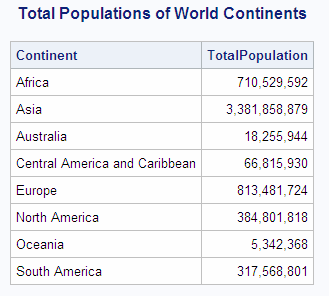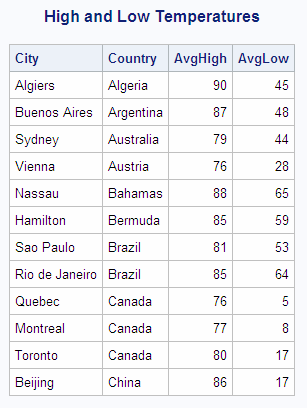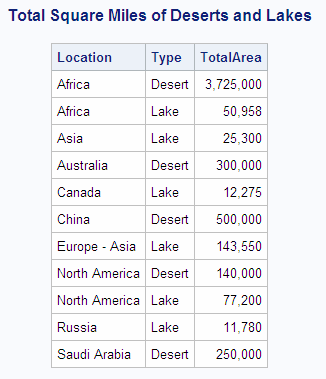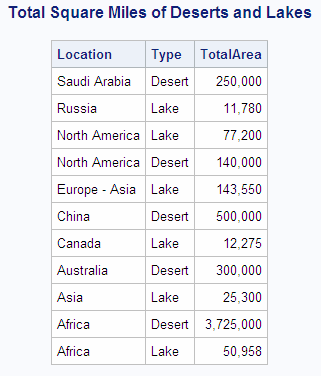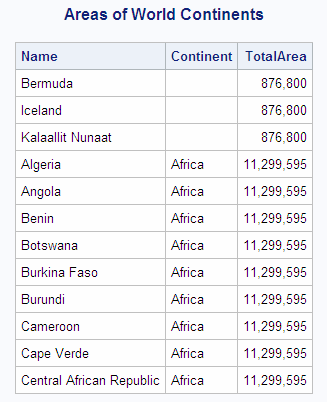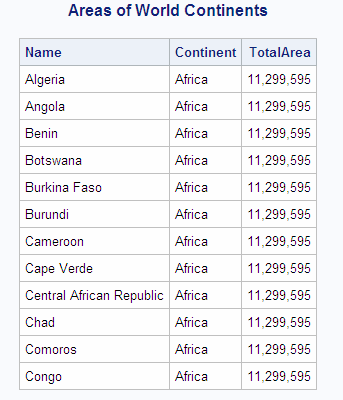Grouping Data
The GROUP BY clause groups data by a specified column
or columns. When you use a GROUP BY clause, you also use an aggregate
function in the SELECT clause or in a HAVING clause to instruct PROC
SQL in how to summarize the data for each group. PROC SQL calculates
the aggregate function separately for each group.
Grouping by One Column
The following example
sums the populations of all countries to find the total population
of each continent:
Grouping without Summarizing
When you use a GROUP
BY clause without an aggregate function, PROC SQL treats the GROUP
BY clause as if it were an ORDER BY clause and displays a message
in the log that informs you that this has happened. The following
example attempts to group high and low temperature information for
each city in the SQL.WORLDTEMPS table by country:
Grouping by Multiple Columns
To group by multiple
columns, separate the column names with commas within the GROUP BY
clause. You can use aggregate functions with any of the columns that
you select. The following example groups by both Location and Type,
producing total square miles for the deserts and lakes in each location
in the SQL.FEATURES table:
Grouping and Sorting Data
You can order grouped
results with an ORDER BY clause. The following example takes the previous
example and adds an ORDER BY clause to change the order of the Location
column from ascending order to descending order:
Grouping with Missing Values
Finding Grouping Errors Caused by Missing Values
When a column contains
missing values, PROC SQL treats the missing values as a single group.
This can sometimes provide unexpected results.
In this example,
because the SQL.COUNTRIES table contains some missing values in the
Continent column, the missing values combine to form a single group
that has the total area of the countries that have a missing value
in the Continent column:
libname sql 'SAS-library';
/* unexpected output */
proc sql outobs=12;
title 'Areas of World Continents';
select Name format=$25.,
Continent,
sum(Area) format=comma12. as TotalArea
from sql.countries
group by Continent
order by Continent, Name; The output is incorrect
because Bermuda, Iceland, and Kalaallit Nunaat are not actually part
of the same continent. However, PROC SQL treats them that way because
they all have a missing character value in the Continent column.
To correct the query
from the previous example, you can write a WHERE clause to exclude
the missing values from the results:
/* modified output */
proc sql outobs=12;
title 'Areas of World Continents';
select Name format=$25.,
Continent,
sum(Area) format=comma12. as TotalArea
from sql.countries
where Continent is not missing
group by Continent
order by Continent, Name;Note: Aggregate functions, such
as the SUM function, can cause the same calculation to repeat for
every row. This occurs whenever PROC SQL remerges data. See
Remerging Summary Statistics for more information about remerging.
Copyright © SAS Institute Inc. All rights reserved.
